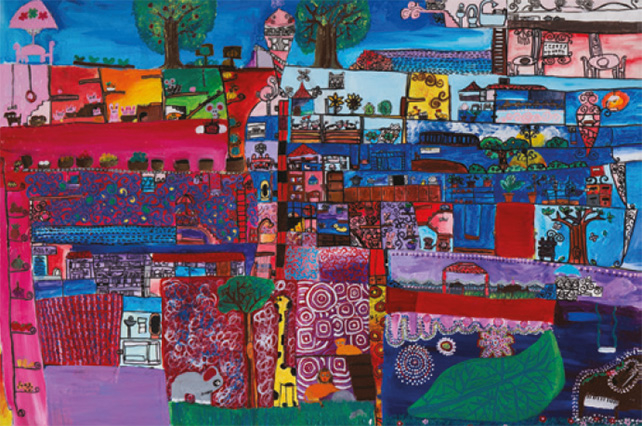
Andrea Yap En Rui, Animal’s Kingdom, Acrylic on canvas, 99 x 150 cm
Sensibility in art relates to emotions and feelings. It also relates to how we perceive meaning from looking at an artwork.
There are two basic ways to appreciate an artwork, the formal and the contextual. The formal refers to our visual understanding of what is graphic and visual: such as line, colour and shape. Broadly, the contextual means using other information at hand such as the story behind the work, anecdotes of the artist’s life or the time in which the artwork was made, to add to our appreciation of the art object. As viewers, we take time to look at an object, observe its visual qualities and we make meaning from a combination of information and our own observations.
In Southeast Asia, we can also associate sensibility to the spiritual (something we cannot see, only feel). The spiritual (not necessarily religious) is prominent in the arts and culture of Southeast Asia. For example, the broad definition of ‘semangat’ in Malay means ‘keep spirit’ or ‘spirit’. From this we understand that souls and spirits inhabit animate and inanimate objects, and contribute
to or participate in, the general forces of nature and of life itself.
The notion of sensibility therefore posits that we find meaning and feeling in both formal and contextual terms of art-making and art objects. More importantly, sensibility in relation to the Southeast Asian concept of ‘semangat’ is closely aligned to that of reciprocity. As viewers of an art object, it matters as much, what information resides in the object as what we, as living beings, bring to it.
By Dr. Bridget Tracy Tan
Venue: UOB Art Gallery, UOB Plaza 1, 80 Raffles Place, Singapore
When: 13 Jun - 26 Aug 2016,
By: United Overseas Bank Limited






